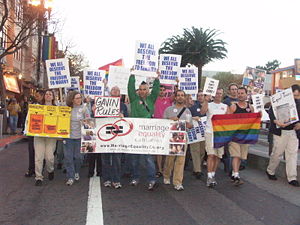San Francisco Bay Guardian, May 31, 2000
SUTRO SLEAZE
Exclusive: How S.F.’s planning director pulled a legally dubious move to push through the installation of dangerous antennae on Sutro Tower.
By Savannah Blackwell and Lucia Hwang; Bob Porterfield contributor
San Francisco planning director Gerald Green usurped the authority of the zoning administrator and approved almost 200 telecommunications antennae already installed on Sutro Tower in apparent violation of city law, the Bay Guardian has learned.
Green had no legal authority to overrule then-zoning administrator Mary Gallagher last December and allow the antennae to remain in place without authorization from the full Planning Commission, public records show. The powerful group of broadcasters that owns the 977-foot eyesore should have been forced to go through a comprehensive planning process; the antennae are now in place illegally. The controversy over the decision shows in unusual clarity just how far appointees of Mayor Willie Brown are willing to go to please powerful lobbyists and big campaign contributors.
In fact, planning activists say it was Brown who forced Green to approve Sutro Tower Inc.’s additions of 179 heavy and potentially hazardous pieces of telecommunications equipment to the tower. And a legal declaration filed by Gallagher states that she was told by Green to hold off on her decision until after the December runoff election – apparently to keep the controversy out of the political spotlight until Brown was safely reelected.
All but three of the antennae have been hanging on the tower for years. But under pressure from neighborhood activists, Sutro Tower moved last August to get a retroactive building permit for the devices.
Under the city planning code, the zoning administrator had the sole authority to decide if special permission, called “conditional use authorization,” was needed for Sutro’s changes to the tower. Decisions and orders of the zoning administrator may be appealed only to the Board of Appeals.
Gallagher decided Dec. 17, 1999, that Sutro’s original 1966 conditional use authorization did not cover the changes and that the antennae and two underground fuel tanks required a new conditional use authorization – a cumbersome procedure that would have involved public hearings and a full Planning Commission vote. On Dec. 24 Green revoked that decision, saying he was acting as zoning administrator because Gallagher had resigned. He later issued a ruling allowing the antennae.
But a Bay Guardian investigation shows that Gallagher was still signing legal zoning documents in her official capacity at least several days after Dec. 24 and that she was still in office and on city payroll as recently as April 13, 2000.
Gallagher and Green did not respond to interview requests. Ron Vinson, a spokesperson for Brown, said the mayor had not comment.
Political pressure
In a May 23, 2000, declaration submitted to the Board of Appeals and made public at a May 24 hearing on Sutro Tower, Gallagher suggested that she believed election-season politics were behind Green’s unusual action. According to Gallagher’s declaration, concern for the mayor’s political career was influencing how the department would handle Sutro Tower.
“In the weeks prior to December 17, I spoke with Mr. Green on at least two more occasions regarding the determination. On the first occasion he instructed me to hold the determination until after the runoff election and make sure I check it with the city attorney’s office.” (The runoff election was held Dec. 14, 1999.)
One week after Gallagher issued her Dec. 17 decision, Green wrote a letter to Christine Linnenbach, the attorney who represents residents living near the tower, saying that Gallagher had resigned from her job and that he now held the position. In the letter, Green said he had decided to “rescind” Gallagher’s decision and that after further review he would issue a new opinion.
“I have been informed by Mary Gallagher that she has resigned her position as Zoning Administrator,” Green wrote in the Dec. 24, 1999, letter. “Therefore, in accordance with Section 307(e) of the Planning Code I shall now function as the Acting Zoning Administrator.”
After word of Green’s letter got out, residents living near the tower and some San Francisco supervisors demanded an explanation. A Dec. 29, 1999, article in the San Francisco Chronicle stated without attributing the information that Gallagher had resigned. Green is quoted saying that Gallagher told him Dec. 22 that she “was going to resign.”
The City Attorney’s Office has argued that Green had the authority to rescind Gallagher’s Dec. 17 decision, although different deputy city attorneys give different reasons. In a letter to Sup. Leland Yee dated Feb. 10, 2000, deputy city attorney Mario Kashou wrote, “We have concluded that Director Green may perform the functions of zoning administrator while the position is vacant.”
Deputy city attorney Judith Boyajian went a lot further. She told us in a phone interview that, in her analysis, a zoning administrator can change another zoning administrator’s decision as long as it is not under appeal. Which means that according to Boyajian, Green could have waited until Gallagher left in April and then overturned the ruling on his own. That’s directly contradicted by the City Charter, which states that a zoning administrator’s decision is final unless it’s appealed to the Board of Appeals.
At the May 24 Board of Appeals hearing, board president Arnold Chin asked Boyajian if Green had the right to rescind Gallagher’s Dec. 17 determination. Boyajian answered, “We believe he was authorized.” Debra Stein, a lobbyist for Sutro Tower, argued in her briefs to the Board of Appeals that, under the planning code, the planning director could step in as the zoning administrator and change a determination if there was “sufficient reason.”
Sue Hestor, a lawyer who is an expert in the city planning code, told us that Stein’s reasoning is tantamount to saying that the planning director can pull rank on the zoning administrator at any tine, an extremely dangerous precedent.
“She’s asking for the planning code to be overturned,” Hestor said. She added that in her 20-plus years observing San Francisco city planning, no zoning administrator determination had been changed by any body or person other than the Board of Appeals. “I’ve never seen that,” she said. “The rule is the zoning administrator can only be reversed by the Board of Appeals.” Former zoning administrator Robert Passmore confirmed that in his decades in that job, no other planning official ever changed his decision or tried to overrule him by becoming zoning administrator.
So Green’s ability to rescind Gallagher’s decision seemed to depend, at the very least, on her resigning as zoning administrator by Dec. 24. Green has repeatedly told city officials and the public that Gallagher had resigned by the time he wrote the letter to Linnenbach.
Still on the job
But public records indicate that Gallagher did not officially resign from her position as zoning administrator until April 13 – and that she was certainly still on the job after Green said she had resigned. No official city record exists showing Gallagher’s resignation from any Planning Department position until April 13, 2000.
A Planning Department human resources document obtained by the Bay Guardian clearly states that Gallagher resigned as zoning administrator April 13, 2000.
Payroll records also obtained by the Bay Guardian show that Gallagher was paid as zoning administrator until April 14, 2000, the day Green finally issued a decision reversing Gallagher’s Dec. 17 decision and authorizing the antennae.
Asked how Green could have rescinded Gallagher’s Dec. 24 decision if Gallagher was still considered by the department’s payroll and human resources offices to be the zoning administrator, Boyajian said that the fact she was being paid as the zoning administrator didn’t mean she was actually the zoning administrator.
Boyajian told us that she relied on Green’s word that Gallagher had resigned in December. “My understanding is that she did resign,” Boyajian said. “She hasn’t said publicly that she did not resign. She stayed silent, and I assumed she did not dispute [Green’s claim that she had resigned].”
Public records obtained by the Bay Guardian prove not only that Gallagher was paid as the zoning administrator until April 14, 2000, but also that she continued to act as the zoning administrator until at least the end of December and that Green considered her the zoning administrator until that tine as well.
On Dec. 20, 1999, Gallagher sent an e-mail to all staffers in the Planning Department explaining how to handle her duties as zoning administrator while she was on vacation for the holidays. She described exactly how she wanted planners to sign off on decisions that only she, as the zoning administrator, could make. She said nothing about resigning. Indeed, she told planners that if they did not know how she would rule on a matter, they had to wait until her return the following week.
“When you sign something on my behalf, I ask that you handle the signature by signing your own name and then adding ‘for’ before my printed name,” she wrote. The implication: Gallagher still considered herself the zoning administrator and had not resigned.
On Dec. 27, 1999, Gallagher herself signed off on a variance, which is an exemption from the planning law. Moreover, Green followed Gallagher’s e-mail instructions Dec. 29 when he signed a routine variance decision “Gerald Green for Mary Gallagher, Zoning Administrator.” Green’s decision to sign “for” Gallagher amounts to his acknowledgment that she held the position.
Powerful lobbyists
The Dec. 29 Chronicle article quoted Sutro Tower lobbyist Bob McCarthy saying that he and fellow Sutro Tower lobbyist Stein had contacted both Green and Gallagher asking that Gallagher’s Dec. 17 decision be rescinded. Lobbyists Stein and McCarthy represent five broadcasters – KPST, KBWB, KQED, KTVU, and KGO – that have installed unpermitted antennae on the tower.
Internal Planning Department e-mail obtained by the Bay Guardian shows that Gallagher was under intense pressure from the Sutro lobbyists. In an e-mail to planner Jim Miller dated Dec. 17, 1999, Stein writes, “Heads up for hot gossip, pal: I’ve got a meeting and a verrrrrry serious showdown with Ms. Gallagher scheduled for tomorrow morning. The more I think about her canceling my hearing without the courtesy of talking with me, the more pissed off I get. Also the part about how I’m such an unethical exploiter that I would cheerfully sucker a planner into violating a supervisor’s order or committing some other form of professional suicide just so that I could charge a client a few more bucks. Grrrrr.”
In an April 3, 2000, e-mail from Gallagher to planners, she announced that she had been hired by the city of San Mateo as chief of planning and that her last day with the San Francisco Planning Department would be April 13. The e-mail suggests that Gallagher did not appreciate interference from Sutro Tower lobbyists.
“First I tried to get a job expediting telecommunications permits, but I couldn’t get any good references,” Gallagher wrote. “Then I tried looking for a job in a local city agency not under investigation by federal authorities, but I couldn’t find any. Finally, through some kind of sutro karma deal, I was hired as Chief of Planning for the City of San Mateo.” Planning sources have told the Bay Guardian that Sutro Tower planning process is under investigation by the Federal Bureau of Investigation (see S.F. Confidential, 5/24/00).
Sutro lobbyists played a major role in raising money to reelect Brown. McCarthy, Stein, and their clients accounted for 14.3 percent of the $2.6 million in soft money spent in support of Brown’s campaign, according to campaign records filed with the city’s Ethics Commission.
Stein and McCarthy contributed $21,250 to several independent expenditure committees. Soft money contributions from their clients totaled $356,000.
‘Extraordinary step’
Despite Gallagher’s declaration and extensive testimony from residents worried about whether Sutro Tower can withstand an earthquake, the five-member Board of Appeals voted unanimously May 24 to uphold Green’s April 14 decision that Sutro Tower did not need special permission for the 179 antennae and the structures.
A June 1999 study done by Sutro Tower says that the tower needs structural improvements to make sure it will not fall over in an earthquake. McCarthy, Stein, and Green told the board that a special permit was not needed because the original 1966 permit foresaw additions for telecommunications services.
“The 1966 determination contains findings that seem to contain an expectation of additional antenna,” Green said at the hearing. He also said that he took the “extraordinary step” of stepping in as zoning administrator because Gallagher’s decision contradicted 12 years of planning policy. He said that at the time (Dec. 24) he was the zoning administrator and that Gallagher did not consult with him. He was under oath at the hearing.
Gallagher said in her declaration that her interactions with Green regarding Sutro Tower and her notes were documented and provided to her attorney, Malcolm Burnstein. Burnstein’s office said he was out of the country and not available for comment.
Several members of the Board of Appeals are connected to Brown. Sabrina Saunders, as head of the One Accord PAC, spent $58,000 in independent expenditure money to get Brown reelected. Carole Cullum is a past chair of the Alice B. Toklas Lesbian/Gay Democratic Club, which spent $264,000 on the mayor’s behalf. John McInerney III is an associate of Joe O’Donoghue, the Residential Builders Association head who contributed $20,000 to One Accord PAC for Brown’s runoff election.
Joan Girardot, outgoing president of the Coalition for San Francisco Neighborhoods, said the decision on Sutro Tower was a disaster. “As guardians of the City Charter, the planning code, and the public trust, the Board of Appeals should grant a rehearing,” she said.
The infernal tower: a timeline
1966 Sutro Tower Inc. receives conditional use authorization (special permission) to construct the 977-foot-high tower in the middle of a residential neighborhood. KRON, the San Francisco Chronicle, and the tower’s other big media owners black out the story.
Sept. 29, 1971 The Bay Guardian publishes “It’s Taller than Transamerica, as Tall as the Eiffel Tower.”
Summer, 1999 Residents living near the tower inform the Board of Supervisors that over the last decade, Sutro Tower added 176 antennae to the tower and two underground fuel tanks to the site without first getting building permits as required by law.
Aug. 16, 1999 Sutro applies for a retroactive building permit for the antennae and fuel tanks.
Dec. 8, 1999 Courts rule that Sutro’s addition of a 10-ton digital TV antenna to the tower does not require special permission.
Dec. 9, 1999 Christine Linnenbach, attorney for the residents, asks zoning administrator Mary Gallagher to determine whether Sutro’s changes to the tower necessitate getting special permission from the city.
Dec. 17, 1999 Gallagher decides Sutro does need special permission for the antennae and fuel tanks.
Dec. 24, 1999 Planning director Gerald Green announces that Gallagher has resigned, assumes her position, and revokes her Dec. 17 decision.
Dec. 27, 1999 Though she has supposedly resigned, Gallagher signs a planning document as the zoning administrator.
Dec. 29, 1999 Greens signs a planning document “for Mary Gallagher, Zoning Administrator.”
Jan. 6, 2000 Linnenbach tries to appeal Green’s Dec. 24 action, but is denied.
April 13, 2000 Gallagher officially resigns as zoning administrator.
April 14, 2000 Green, as both the director and zoning administrator, decides that Sutro does not need to get special permission for the antennae and fuel tanks.
April 27, 2000 Neighbors appeal Green’s April 14 decision.
May 24, 2000 The Board of Appeals votes 5-0 to uphold the decision.
A favor for Mike Sugerman?
The Sutro Tower case is not the only time that planning director Gerald Green has apparently illegally jumped in as the zoning administrator. On Dec. 8, 1999, Green claimed in a planning document obtained by the Bay Guardian that Gallagher was out sick and then signed a variance granting permission to build an addition onto the back of a house at 825 Faxon Ave.
“Because the Zoning Administrator was ill, the Planning Director assumed the duties of Zoning Administrator, independently reviewed the full record and rendered the following decision in the capacity of Acting Zoning Administrator,” Green wrote.
Attorney Christine Linnenbach mentioned the case at the Board of Appeals hearing May 24. According to county assessor records, Michael Sugerman, the KCBS radio reporter, and his wife, Janice, own the house. KCBS’s parent company, CBS, owns a part of Sutro Tower Inc.
Payroll documents for Gallagher obtained by the Bay Guardian under the Sunshine Ordinance, however, show that Gallagher worked Dec. 8, 1999, and was not sick. The payroll records show that Gallagher worked 5.75 hours in the office that day and used 2.25 hours of comp time.
Sources close to the San Francisco Planning Department say that Green stepped in because Gallagher had indicated that she was planning to deny the variance. They say that Anita Theoharis, who is president of the Planning Commission, strongly supports the mayor, and lives in the same neighborhood as the Sugermans, argued to Planning Department staff that the Sugermans should get their variance because it was important to keep a member of the press happy during the mayor’s reelection campaign.
In a telephone interview Theoharis acknowledged that she argued to Planning Department staff that the Sugermans should get their variance, but she denies that it was because Michael Sugerman is a member of the media.
“I was supportive of the variance, as was the entire neighborhood, the neighborhood association, the architect, who authored the Westwood Park Association Residential Design guidelines,” Theoharis said. “I don’t care who signed the variance; it was the right thing to do.”
In a phone interview Sugerman said that he was neither aware of nor involved in any politicking for his variance. “I have no idea what anybody said, and I have never in my career asked anybody to give me a favor because of my job,” he said. “That’s completely unethical.” Ron Vinson, spokesperson for Mayor Willie Brown, said the mayor had no comment on the Faxon Avenue decision. Green did not respond to questions regarding the Faxon decision.
S.B. and L.H.







